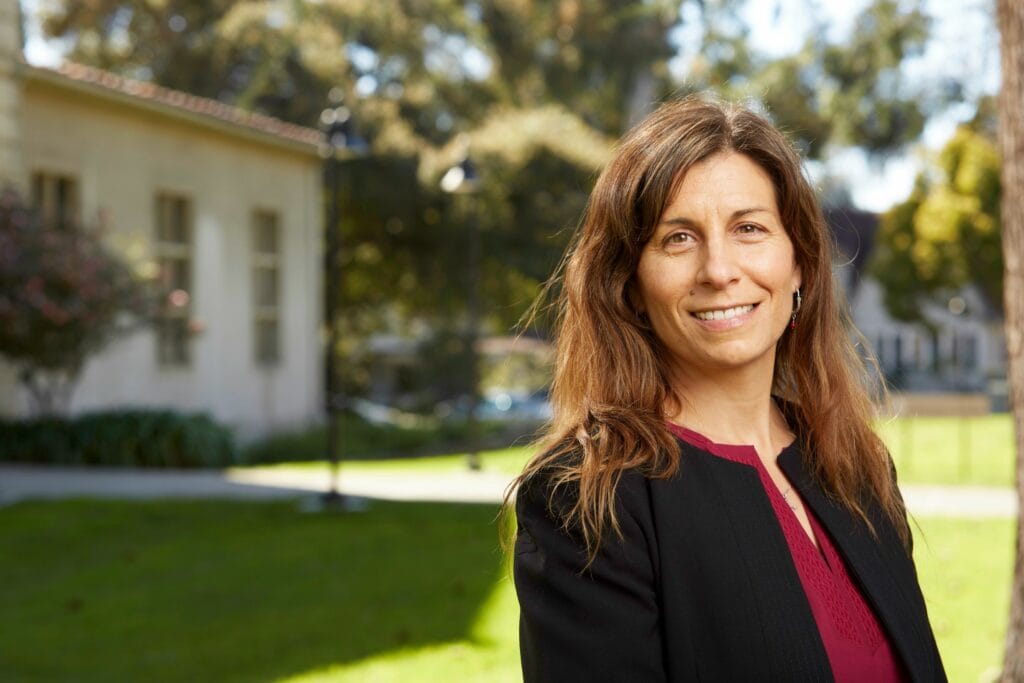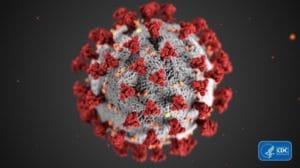COVID-19 From an Epidemiologist’s Perspective

The COVID-19 pandemic has introduced so many unfamiliar terms—coronavirus, PPE, social distancing—into the vocabulary of ordinary people, including “epidemiology” or the study of disease in populations.
For Nicole Gatto, an associate professor in the university’s School of Community & Global Health and director of the doctoral program in Health Promotion Sciences, all of those words have been part of her life for nearly two decades.
Though much of her career has been focused on chronic diseases, especially cardiovascular disease and Parkinson’s disease, Gatto as a trained epidemiologist has been understandably focused on what is happening in the pandemic. The rise of the novel coronavirus got her attention right away.
“When I heard about its emergence,” she said, “I immediately had it on my radar.”
Gatto spent a seminal year at the Los Angeles County Department of Public Health after receiving her PhD in epidemiology from USC and completing a post-doctoral fellowship at UCLA.
As a member of the Acute Communicable Disease Control Team, she said that she led “epidemiologic surveillance of influenza and other respiratory viruses for Los Angeles County using data from emergency room visits, laboratories, mortality reports, and other sources.”
Much of the work included tracking infectious disease spread and investigating a large legionella outbreak in Los Angeles. The bacteria causes a pneumonia-type illness called Legionnaires’ disease, as well as a mild flu-like illness known as Pontiac fever.
The novel coronavirus, says Nicole Gatto, is exploiting the kinds of health vulnerabilities affecting many Americans.
In the current crisis Gatto credits her experience in studying chronic diseases as being a key to understanding the unfolding epidemiology of COVID-19, which public health officials and media outlets have repeatedly said affects more severely those patients with preexisting conditions.
The phrase “preexisting conditions” refers to a wide variety of health challenges that many Americans face.
“In the U.S.,” said Gatto, “the most prominent diseases are those that are mostly preventable: heart disease, diabetes, high blood pressure. Seeing those at greater risk succumb to more serious illness from the novel coronavirus speaks to how important it is to prevent chronic diseases.”
Gatto believes that the current global crisis sheds light on vulnerable groups and health disparities within them.
“ ‘Vulnerable population’ is an important concept in public health,” she explained. “Intertwined factors like race, socioeconomics, and access to healthcare all play a role in the public health sphere.”
Currently Gatto is using her data acumen to collaborate with Institute of Mathematical Sciences Director Henry Schellhorn on mathematical modelling of the pandemic, as well as with CISAT Assistant Professor Wallace Chipidza in analyzing early news coverage of COVID-19.
Chipidza and Gatto’s goal is to use observations to help shape recommendations for future public health responses to pandemics.
Gatto is also taking this real-world experience into the classroom.
Her course “Emerging Chronic and Infectious Disease Epidemiology” exposes students to the subject of respiratory viruses like influenza as well as other viruses including HIV, Ebola, and West Nile. With news coming out of China in early 2020 linking COVID-19 to a wet market in Wuhan, Gatto integrated material into a lecture on zoonotic and vector-borne illnesses this spring in her “Environmental and Occupational Health” class.

Her advice going forward? There are two parts to Gatto’s answer. The first involves testing.
“Without adequate testing to identify cases during the early weeks of the virus’s arrival in the U.S., we then relied on other public health measures in order to slow the spread of a disease so contagious,” Gatto said. “Mitigation serves in part to reduce anticipated demands on our healthcare system from happening all at once. Going forward, testing will likely be a part of an effort for Americans to return to work.”
The second involves doing our best to follow public health safety guidelines … and helping those who need it the most.
“What we can’t do right now is eradicate this completely—until we have a vaccination,” she said. “What we can do is follow public health recommendations and continue work to prevent preventable diseases, support measures that provide access to healthcare for all, attend to our most vulnerable, and promote individual behaviors to stay healthy.”
***
- Visit Gatto’s website here for more information on her research and work.
- Read more inspiring stories of CGU Heroes